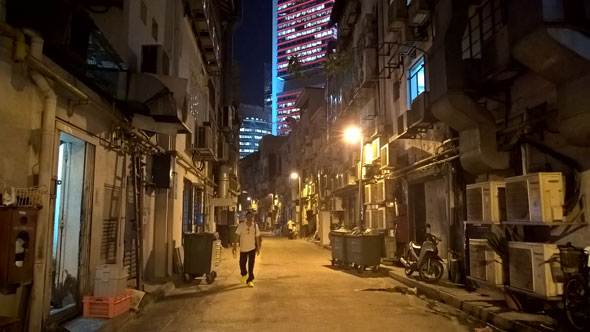Basically, with a digital pro camera, you’re getting the approach to film in a digital package. Meaning: you want an as neutral as possible file, an as accurate as possible rendition of what you’re capturing. Problem is, digital imaging technology has advanced so much that it’s kind of obsolete to process files in-camera with algorithms that treat each and every pixel with the same courtesy. What if… what if imaging technology today is so advanced that it’s able to selectively handle areas that are of concern, such as highlights and shadows, for better overall detail, color and overall rendition. Thing is, the technology is here and widely used, but “limited” to smartphones and cheaper cameras and therefore not really pushed by the industry leaders. Why’s that so? Because photographers with more serious gear don’t need such an average-Joe mode (AJM). Oh really?
Seriously, how much time could you save with a DSLR or mirrorless “smart” processing mode. A mode not like the built-in filters no one uses anyway, but a mode that mimics the best of imaging technology found in portable devices, developed for users who don’t care about post-processing or don’t have a clue about it.

The common approach is: post-processing is a very common must. Editing is a part of digital photography. You must edit photos if you want the best look. A photo is not finished until it is edited. Let’s think a bit out of the box, though, by keeping editing to an absolute minimum, to reflect the scene accurately and not turn every shot into an artistic interpretation. Compulsory editing as an overkill. Shouldn’t images be able to stand on their own? Or at least: keep the digital darkroom to an absolute minimum thanks to ever progressing in-camera processing prowess.

Take the iPhone 6‘s tone mapping, a process to rein in overexposure that put the camera in a class of its own. Add the much better qualities more serious gear delivers, such as more accurate white balance, better contrast and spot-on skin tones. Nothing comes even close on things like dynamic range. But more can be done.
Not saying an AJM would be the ultimate perfect approach, but in-camera auto enhance, a kind of invisible magic wand, should lie within the realms of today’s image processing possibilities. It’s just, why would the camera companies bother if they can already sell cameras with less effort.
They’re profiting from the stigmatization of lower-end gear, as if it’s proof of quality to put as much effort as possible into post-processing. As someone say, most images today are not taken, they’re computed. If that’s done by optional, all-in-one in-camera algorithms, sign me up!
Had a short conversation about this with Ming Thein, he thinks it’s because there isn’t anywhere near enough processing power in a DSLR. He says that isn’t something camera companies are investing in. Question is, and do you really want to buy a DSLR that has a cooked RAW file where information has been lossy compressed/preprocessed in a way that you can’t undo later. No one wants that. But I want the AJM limited to JPEG option.
I could live with less resolution, less perfect detail, less fps and constricted continuous shooting for the sake of a mode that reads and interprets files in a way that is on par with what average Joe is allowed to enjoy. Luminance and color noise are not that much of an issue anymore with today’s sensor sensitivities. Selective in-camera highlights, shadows and light accuracy handling though, and not another filter, not another gimmicky HDR or whatever mode, but absolute straightforwardness and ease of use in higher-end gear, that’s a market.
All depends on more powerful and efficient image processing. Remapping shades and tones might result in certain flatness. But Canon, Nikon et al would certainly be ill advised to not take a page from Apple and especially Lumia. To my own surprise, AJM in most cases delivers evenly lit, nicely balanced results that don’t need a bit of post-processing. Open pixel-peeping close inspection sure, mushy detail and artifacts. In not too few cases, however, AJM salvages the scene altogether. Frustrating really if the original looks nicer on a small screen in your hand than what you see right in front of you with your own eyes. Brave new intelligent image processing, in the hands of everyone, just not DSLR owners.
Could stop the industry’s bleeding a bit, offering the smartphone approach in ultimate gear. Doesn’t disenfranchise the photographer necessarily. Sure, the purists will scorn the thought of it. Whoever sounds off such nonsense isn’t capable of handling the camera in the first place. Is that so. There’s a reason why Apple reinvents photography.
AJM it is, the best of two worlds. For marketing reasons, let’s give it a name that sounds less plebeian. How about: auto mapping. Especially when pressed for quick and reliable results with little time to fiddle with aperture, shutter speed and ISO, I might even be tempted to leave the smartass phone at home.
And folks, stay open-minded!


